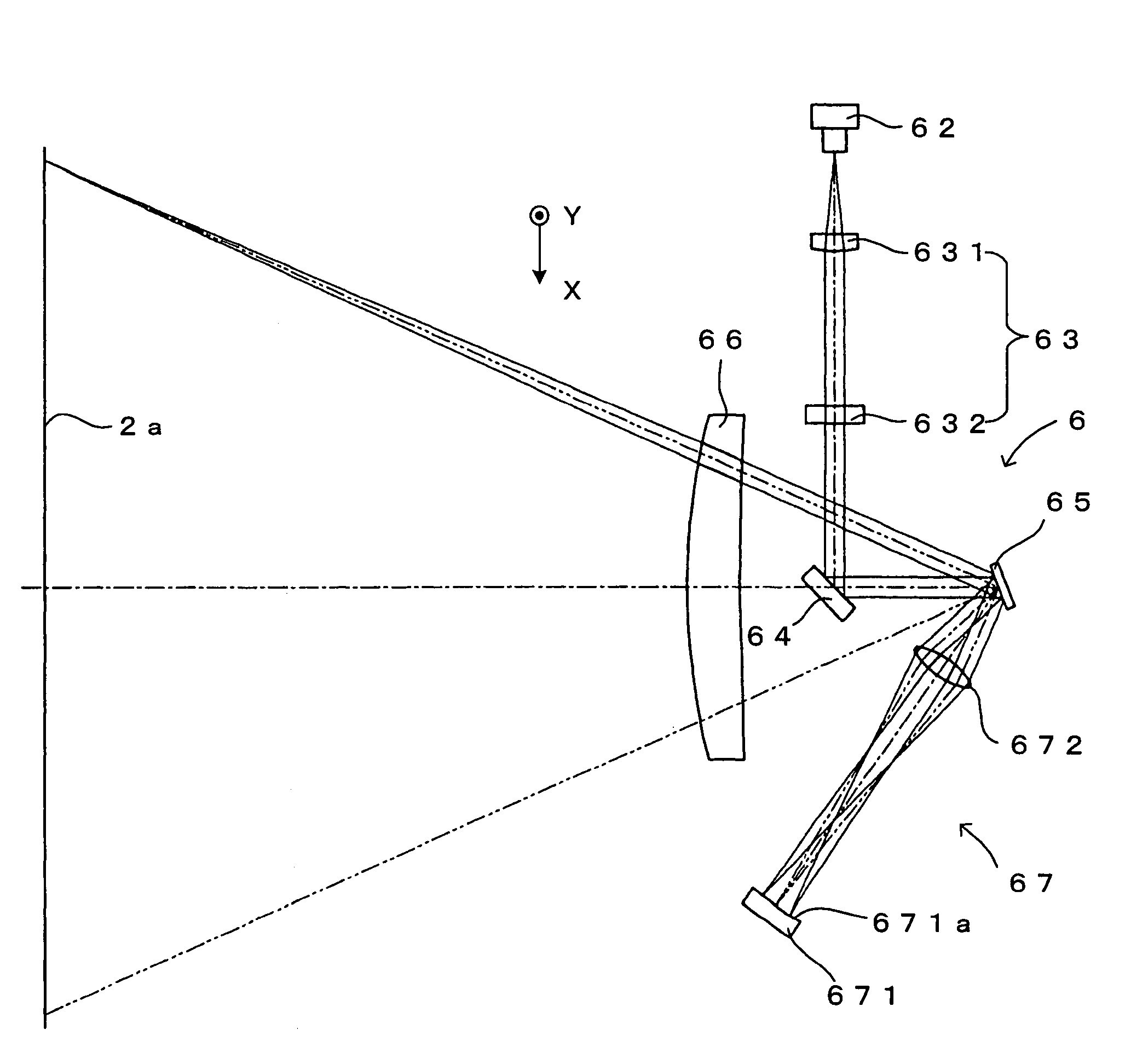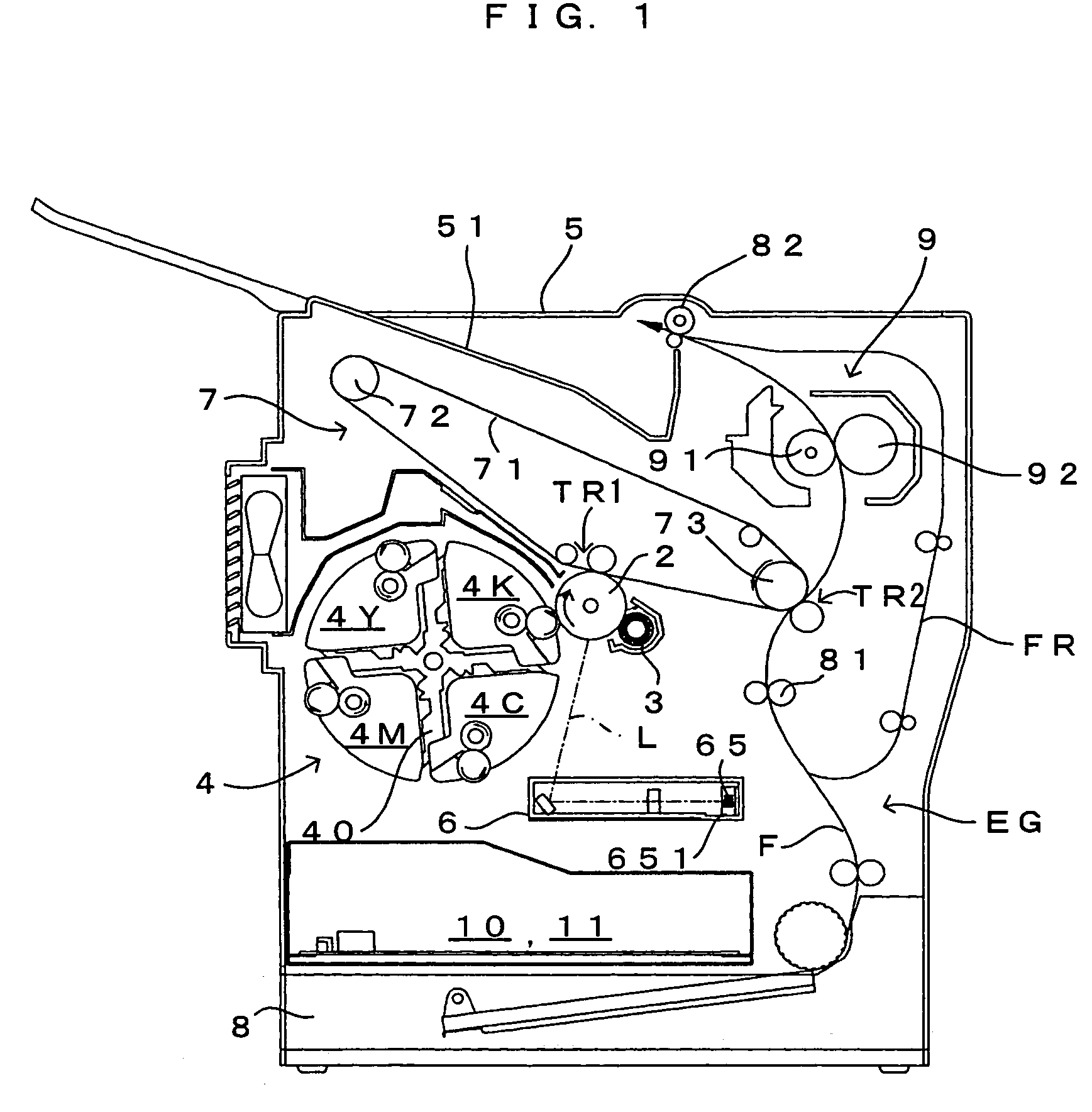Scanner having scan angle multiplier
a scanning angle and multiplier technology, applied in the field of optical scanning apparatuses, can solve the problems of changing the wavelength of light beams, complex transmission optical system, and large number of optical components
- Summary
- Abstract
- Description
- Claims
- Application Information
AI Technical Summary
Benefits of technology
Problems solved by technology
Method used
Image
Examples
first embodiment
[0041]FIG. 1 is a drawing of an image forming apparatus equipped with an exposure unit which is an optical scanning apparatus according to the present invention. FIG. 2 is a block diagram showing the electric structure of the image forming apparatus which is shown in FIG. 1. This image forming apparatus is a color printer of the so-called 4-cycle method. In this image forming apparatus, when a print command is fed to a main controller 11 from an external apparatus such as a host computer in response to an image formation request from a user, an engine controller 10 controls respective portions of an engine part EG in accordance with the print command from a CPU 111 of the main controller 11, and an image which corresponds to the print command is formed on a sheet which may be a copy paper, a transfer paper, a plain paper or a transparency for an overhead projector.
[0042]In the engine part EG, a photosensitive member 2 is disposed so that the photosensitive member 2 can freely rotate...
second embodiment
[0091]Further, in the second embodiment, the parallel light beam impinges upon the deflecting element 65 within a main-scanning cross sectional surface and is deflected by the deflecting element 65 at various angles, and the transmission optical system 67 returns thus deflected light beam as a parallel light beam to the deflection mirror surface 651 of the deflecting element 65. Hence, at any deflection angle, the parallel light beam is emitted from the deflecting element 65 toward the surface (surface-to-be-scanned) of the photosensitive member 2. The scanning lens 66 images this parallel light beam upon the surface of the photosensitive member 2 and make the parallel light beam scan in a desired spot diameter.
[0092]In addition, the second embodiment requires that the two transmission lenses 674 and 675 are formed by aspheric lenses having the same structure and are symmetrized with respect to the intermediate image position P3, which permits designing the lenses relatively simple ...
PUM
 Login to View More
Login to View More Abstract
Description
Claims
Application Information
 Login to View More
Login to View More - R&D
- Intellectual Property
- Life Sciences
- Materials
- Tech Scout
- Unparalleled Data Quality
- Higher Quality Content
- 60% Fewer Hallucinations
Browse by: Latest US Patents, China's latest patents, Technical Efficacy Thesaurus, Application Domain, Technology Topic, Popular Technical Reports.
© 2025 PatSnap. All rights reserved.Legal|Privacy policy|Modern Slavery Act Transparency Statement|Sitemap|About US| Contact US: help@patsnap.com



